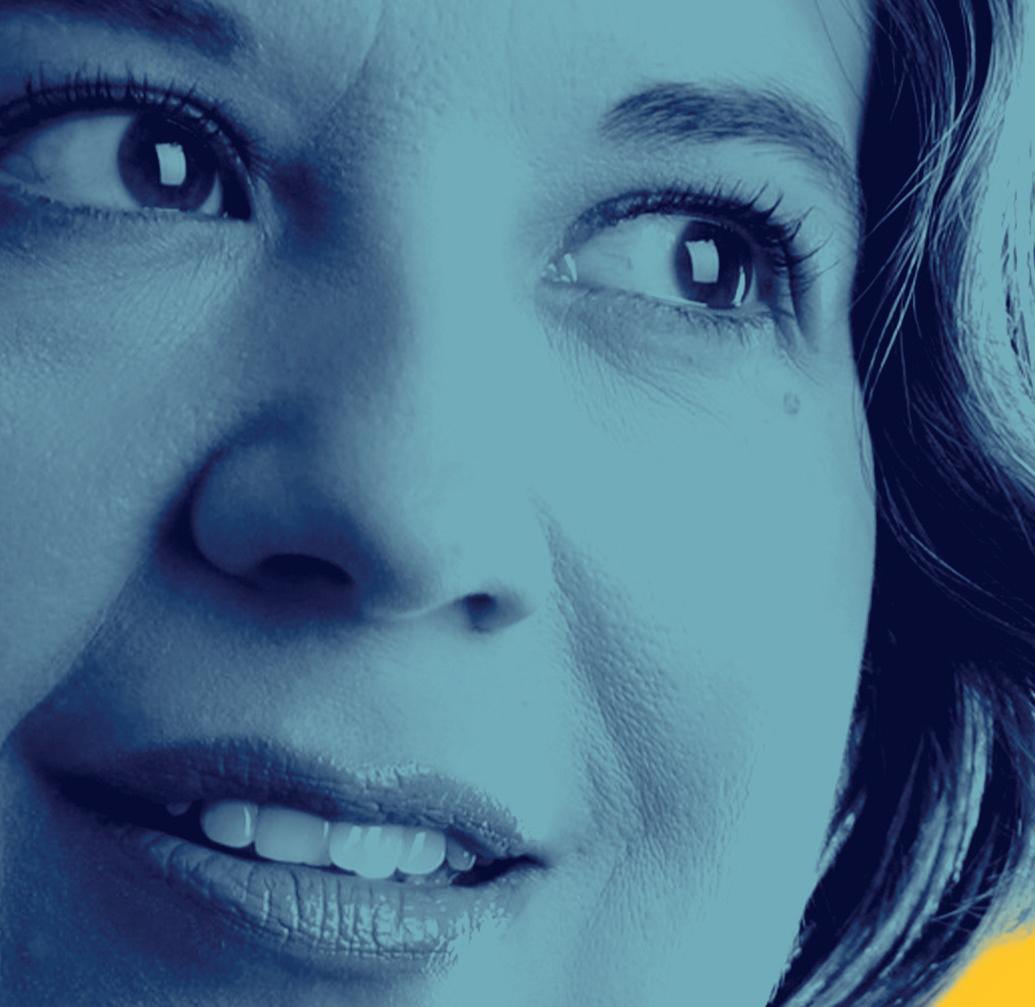
8 minute read
Leslie Kern


Advertisement



© Mitchel Raphael











The City That Cares
Leslie Kern Urban scholar & author of Feminist City
How do we create cities in which everyone is taken care of? Leslie Kern explains how fl awed urban design excludes essential – paid and unpaid – care workers. Her plea: put care back into the city.
I grew up in a rapidly expanding suburb of Toronto, Canada, where it seemed half my childhood was experienced through a car window as we navigated sprawling parking lots and multi-lane roads. My parents were trying to do their best for my brother and I, but I knew that the suburbs weren’t for me. I imagined a life where all the things I wanted were in my neighbourhood. I even knew where that place was – just down the highway. The city.
Unbeknownst to me, I was intuiting what feminist urban writers had long claimed: that the city is the place for women. The suburbs held isolation, car dependency and traditionalism. The city promised community, proximity and freedom. I held fast to this belief through my college years in Toronto. For the first time, I experienced independence and a sense of autonomy. I felt I could go anywhere and do anything I wanted. It was true that a sense of fear at night or a nasty catcall from a passing car could interrupt these joyful feelings. Still, I didn’t blame the city for the bad behaviour of men. I was confident and happy.
I moved to London after university and those feelings followed. Bigger and more complex than Toronto, London was still a safe and accessible place for a young woman wanting to explore. Public transportation was the lifeline of the city. It was a rare day that I didn’t easily hop on a red double decker bus or the Tube. The city and all that it had to offer – work, friends, fun – was again at my fingertips. Signs of trouble When I became pregnant, however, the first cracks in my image of the city as a place of freedom and mobility started to appear. A subway ride became an exercise in frustration and nausea. Perfectly able-bodied businessmen buried their noses in the broadsheets, willfully ignorant of the pregnant person looking for a place to sit. With others, the polite indifference of the city dweller gave way to invasive hands on my belly and comments about my appearance, health and future child-rearing practices. The anonymity promised by city life had disappeared as I became a ‘public body’ in public space.
These inconveniences were nothing compared to the challenges of navigating London with a baby. I quickly learned how inaccessible most cities are, a lesson that had been hidden from me because of my able-
bodied privilege. The first time I tried to take a pram on public transportation was also the last. From the crowds to the hostile glares of those asked to make space to the lack of ramps and lifts, I was faced with a set of exhausting barriers that made simple journeys into obstacle courses. Coupled with few spaces to nurse, change, or play with a baby in public, these barriers sent me a clear message: public space isn’t for you. You belong at home. In those moments, the promise of the city crumbled before me.
I was rapidly being schooled in the hard lessons of the city of men. Here, the needs of mothers and other people who perform care work are rarely considered by the (usually male) city builders: planners, architects, designers, civil engineers, transport experts, politicians. A lack of investment in what we might call a ‘care infrastructure’ can be seen across the city. Few public toilets. Inaccessible public spaces. No space for strollers or children. Nowhere to sit or rest. Long distances between sites of care service. Few services for disabled people. Sidewalks blocked by restaurant patios, thoughtless landscaping, or snow. High cost of child-related and other care services (coupled with low wages for those who do this work).
My outrage at the ways the city had betrayed me as a woman and a mother led me to an academic career studying and writing about gender and the city. The place of care in the city has been a major theme, brought even more sharply to the surface by the Covid-19 pandemic and the various crises of care it illuminated. While it is true that women take on a disproportionate share of the world’s care work, in cities and elsewhere, care is not only a ‘woman’s issue’ or even a parent’s issue. The spaces and services that would make care work easier for parents would also help seniors and disabled people.
Though often treated as though they are unimportant, these groups also have a right to the city: to access public spaces, to participate in city life, to have their needs met in their communities.
In other words, care matters in designing cities for all. We all need care in various forms throughout our lives, and most of us engage in care work, paid or unpaid, on a regular basis. Recognising this shared reality and our mutual interdependence provides a basis for insisting that cities take care seriously. This would mean a shift in the typical list of urban priorities. Economic growth, development, tourism, investment, spectacular events: these have their place, but too often they are elevated above the needs of people who live and work in cities, and above the needs of those who spend a large portion of their time caring for others.
Putting care back into cities My travels to and research on cities in different parts of the world have returned some of my optimism about the power and potential of city life for women and all who do care work. There are positive changes and unique initiatives happening all over that are designed to bring care into the heart of city agendas. In Bogotá, Colombia, the city has implemented a ‘district care system’ intended to bring carerelated spaces and services into closer proximity. This addresses a major barrier for care-givers: the time, distance and cost of travel between sites such as schools, medical offices and child care centres.
In Los Angeles, USA, the city’s major transportation agencies undertook comprehensive studies of the travel needs of women and girls and the barriers they face to using public transit. Based on these surveys, agencies are considering a wide range of strategies to improve safety, affordability, accessibility and reliability across the system. Everything from toilet access to space for strollers is part of the plan.
In Seoul, Korea, and Singapore, rapidly aging populations have prompted city governments to take action on accessibility. Moving toward barrier-free access to public transit and public buildings is part of an agenda that recognises the rights of elderly and disabled people to participate in public life. It also serves the needs of caregivers of all kinds, for whom physical accessibility is a key factor in mobility.
These are just a few examples of the very practical steps cities can take to make the lives and labour of care workers less onerous and time consuming. By demonstrably prioritising care, cities can begin to shift the values upon which they’re built. Care is a key component of inclusivity, because we all, in different ways and at different times throughout our lives, give and receive care. It is the fundamental work upon which all else rests. Cities that are truly designed for all must be cities that truly care for all.
CURIOUS FOR MORE?
How can we redesign cities to cultivate a culture of care? Learn all about it in the DCFA programme The Caring City .
Leslie Kern presents her book Feminist City and speaks about urban gender inequality in the FemCity programme Claiming Space in a Man-Made World. BOOK: FEMINIST CITY: CLAIMING SPACE IN A MAN-MADE WORLD
In this book, Leslie Kern exposes what is hidden in plain sight: the social inequalities built into our cities, homes, and neighborhoods, and offers an alternative vision of the feminist city.
PODCAST: PEOPLE BEHIND THE PLANS
How do different groups of people experience the cities we live in? In this podcast, Leslie Kern untangles these questions and envisions a feminist city.










